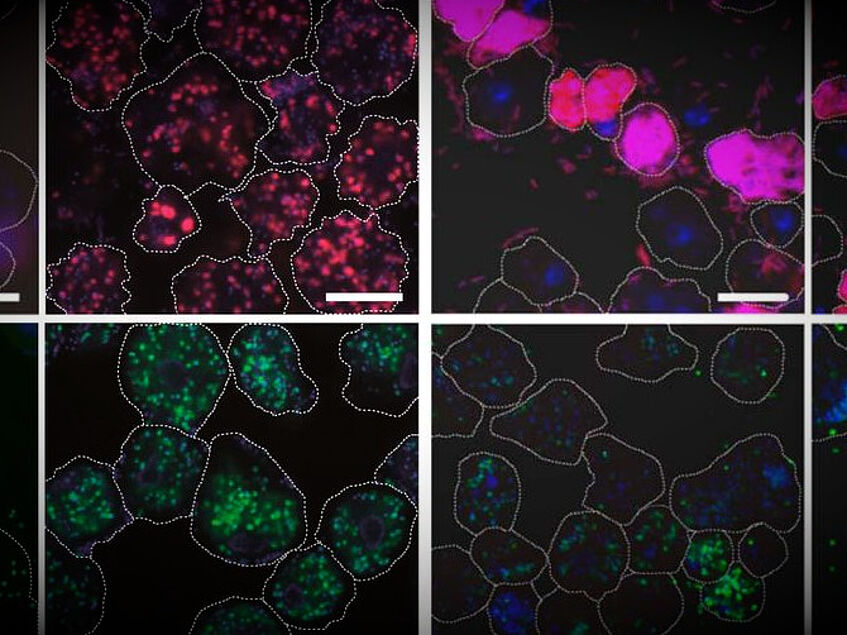Microbe-host interactions in protists
Environmental amoeba isolates harboring the symbiont P. amoebophila eliminate different L. pneumophila strains. Adapted from König et al 2019.
Many protists harbor specific bacterial symbionts. The function of these symbionts is, however, mostly unknown, and so are the underlying mechanisms of host interactions.
We are using diverse model systems to better understand the role of microbial symbionts for their protist hosts. We have shown that chlamydial symbionts can protect amoeba from lethal infections with the bacterial pathogen Legionella pneumoniae, and we have described an unusual protein secretion system in the amoeba symbiont Amoebophilus asiaticus.
We study amoeba symbionts such as Nucleicultrix amoebiphila to better understand how bacteria target and replicate in the nucleus of their host cells.
Selected publications on this theme:
- König L, Wentrup C, Schulz F, Wascher F, Escola S, Swanson MS, Buchrieser C, Horn M. 2019. Symbiont-mediated defense against Legionella pneumophila in amoebae. mBio 10: e00333-19. http://dx.doi.org/10.1128/mBio.00333-19
- Böck D, Medeiros JM, Tsao HF, Penz T, Weiss GL, Aistleitner K, Horn M, Pilhofer M. 2017. In situ architecture, function, and evolution of a contractile injection system. Science 6352: 713-717. http://dx.doi.org/10.1126/science.aan7904
- Schulz F, Horn M. 2015. Intranuclear bacteria: inside the cellular control center of eukaryotes. Trends Cell Biol. doi: 10.1016/j.tcb.2015.01.002. http://dx.doi.org/10.1016/j.tcb.2015.01.002
- Schulz F, Lagkouvardos I, Wascher F, Aistleitner K, Kostanjsek R, Horn M. 2014. Life in an unusual intracellular niche: a bacterial symbiont infecting the nucleus of amoebae. ISME J. 8: 1634-1644. http://dx.doi.org/10.1038/ismej.2014.5
- Horn M, Wagner M. 2004. Bacterial endosymbionts of free-living amoebae. J. Euk. Microbiol., 51: 509-514

